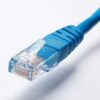Understanding Low Voltage Cabling: Techniques and Innovations
Low voltage cabling is essential for modern network infrastructure, providing the backbone for communications in various environments, from residential to commercial settings. These cabling systems encompass various types, including Category cables (Cat5e, Cat6, Cat6a), coaxial cables, and fiber optic cables, each meeting specific transmission requirements. Understanding the structured cabling standards set by organizations such as ANSI/TIA is crucial, as it ensures that cabling installations can support the increasing demand for reliable network connections.
Installation techniques play a vital role in the performance of low voltage cabling. Adhering to best practices, such as proper cable management, adhering to bend radius requirements, and avoiding interference from electrical lines, can significantly enhance the overall performance of network installations. Furthermore, maintaining a clean and organized installation promotes both safety and reliability, reducing the risk of failure or degradation over time.
Innovation within the low voltage cabling field is continually evolving, primarily driven by advancements in technology and the increasing reliance on data-driven solutions. One such trend is the integration of wireless technologies, which augment cabling systems, allowing for increased flexibility and mobility. However, this is balanced by the need for a robust cabling infrastructure that supports high bandwidth demands, especially with the emergence of smart buildings and IoT devices.
Sustainable cabling solutions have also gained popularity, focusing on environmentally friendly materials and practices. This includes the use of recyclable materials in cable production and methods that minimize waste during installation. By staying informed about these innovations, industry veterans can optimize their installations, while newcomers can gain insights into best practices that will serve them throughout their careers.
The Evolution of Networking: From Fiber Optics to Cutting-Edge Solutions
The landscape of networking technology has undergone a significant transformation over the past few decades, driven largely by the necessity for faster and more reliable data transfer solutions. A pivotal advancement in this arena has been the adoption of fiber optic technology, which has remarkably enhanced connectivity that traditional copper cabling cannot match. Fiber optics utilize light to transmit data, resulting in higher bandwidth and significantly faster speeds compared to the electrical signals used in copper cables. This shift has provided businesses and consumers alike with the ability to transmit vast amounts of data over long distances with minimal signal loss.
In contrast to fiber optics, traditional copper cabling faces limitations in terms of speed and distance. While copper remains relevant for certain applications, it is increasingly being outperformed by fiber in scenarios demanding high data transfer rates. Fiber optic cables are less susceptible to electromagnetic interference and have a greater range, enabling seamless connections in urban and rural infrastructures alike. These advantages make fiber optics an invaluable component of modern network infrastructures.
Recently, networking technology has welcomed innovations such as 5G integration, allowing for much faster internet speeds and improving connectivity for mobile devices. This breakthrough is anticipated to play a crucial role in the development of smart cities and the Internet of Things (IoT), where numerous devices must communicate in real time. Furthermore, cloud connectivity has emerged as a vital element in data management and storage solutions. As businesses increasingly move operations to the cloud, the importance of robust network infrastructures capable of supporting dynamic workloads cannot be overstated. The evolution of data centers, with an emphasis on energy efficiency and sustainability, further complements the demand for advanced networking solutions in today’s digital landscape.











